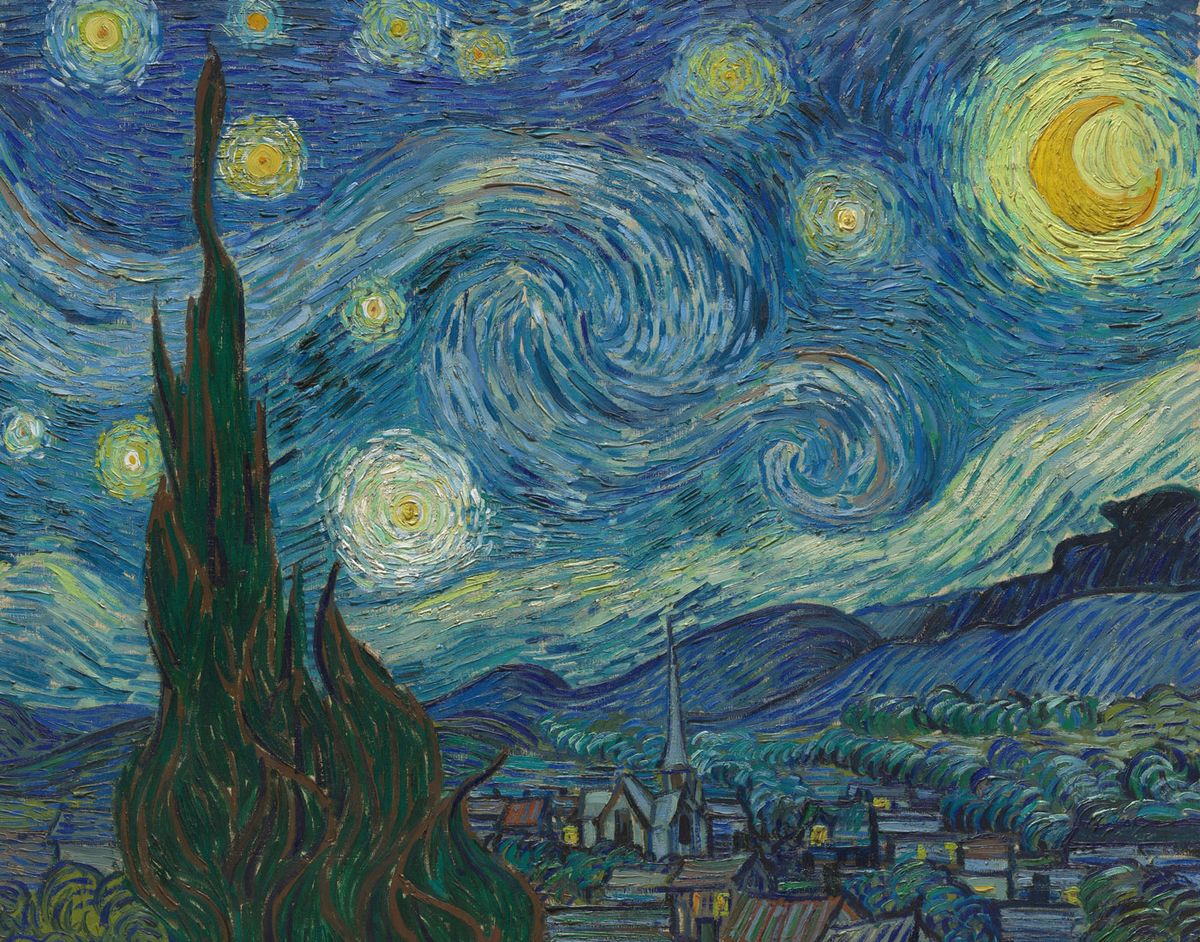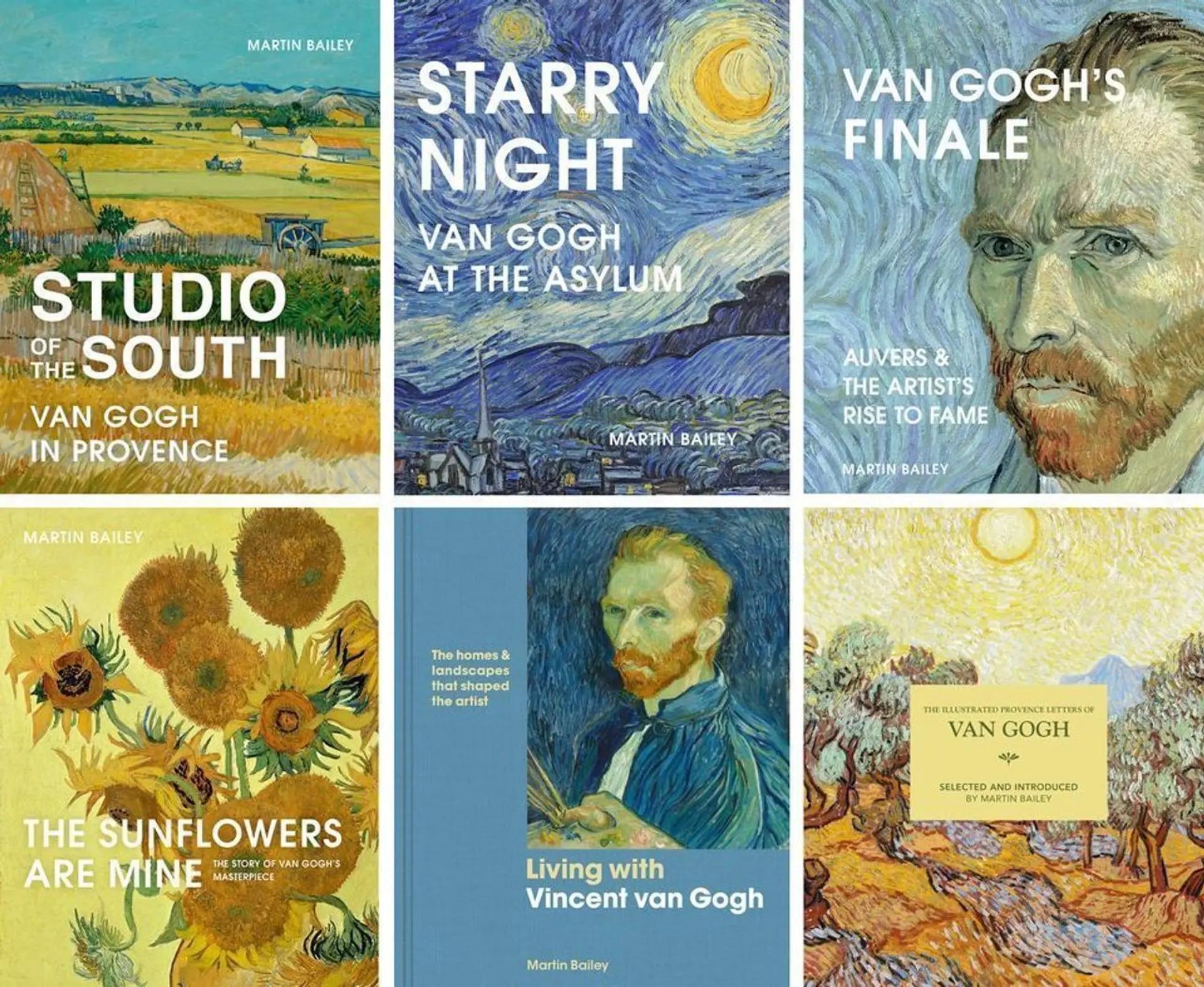For an ambitious exhibition, New York’s Metropolitan Museum of Art is to assemble 40 of Van Gogh’s paintings and drawings of cypresses. These soaring trees became one of the artist’s key motifs in Provence and appear in his masterpiece Starry Night (June 1889). Van Gogh’s Cypresses, selected by the museum’s curator Susan Stein, will run from 22 May to 27 August 2023.
Writing to his brother Theo in June 1889, Vincent expressed his determination to capture the essence of these striking trees: “The cypresses still preoccupy me, I’d like to do something with them like the canvases of the sunflowers because it astonishes me that no one has yet done them as I see them”. They did indeed become his very personal vision.
Vincent later compared the two motifs—and considered their differences. Visually, the tree’s dark foliage and the flower’s bright yellow petals can be seen as opposites. The longevity of the cypress traditionally evokes death and immortality, whereas the sunflower symbolises the transitory joys of life. But for Van Gogh, both motifs were key elements in his perception of the landscape of Provence.
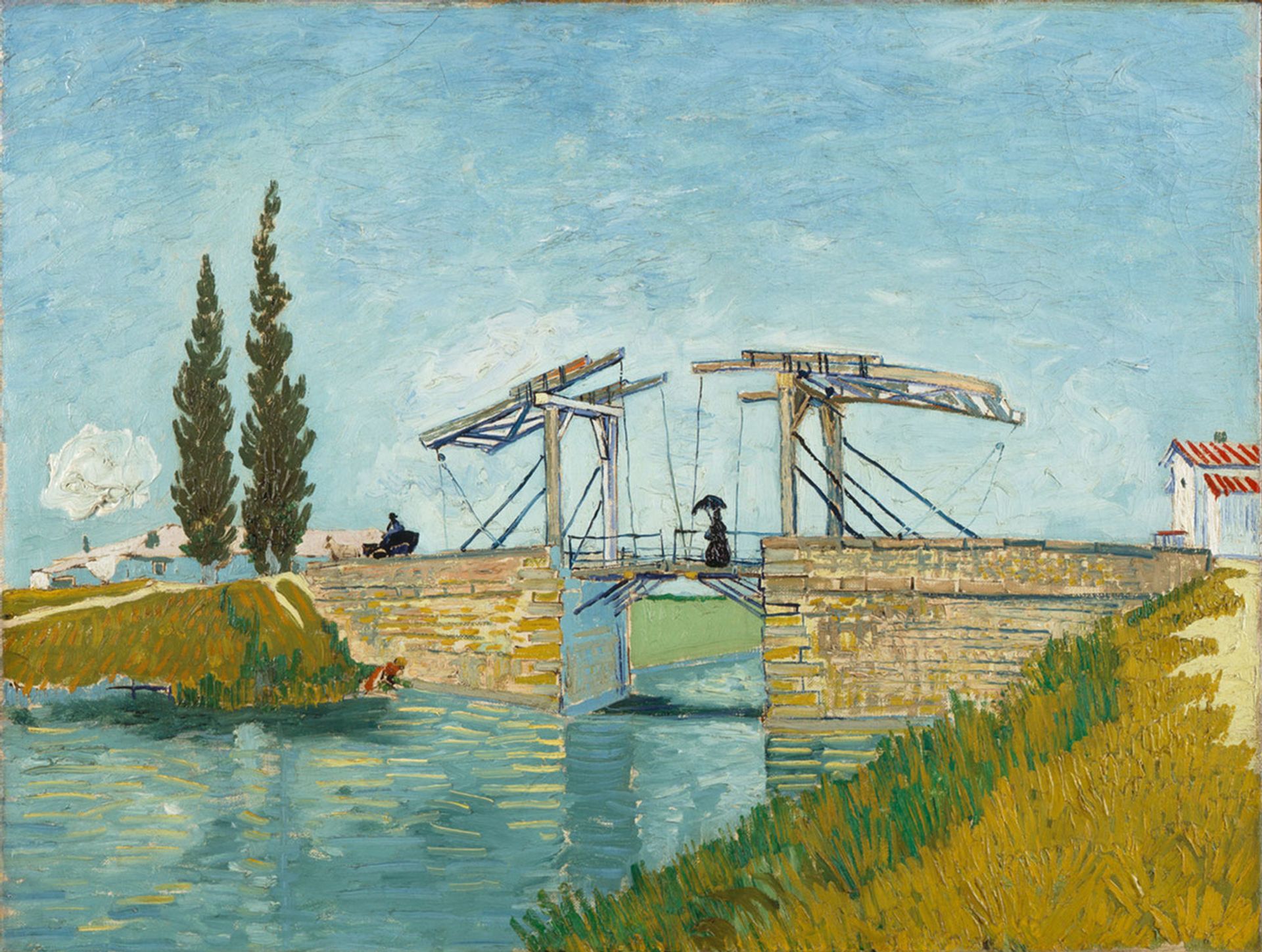
Van Gogh’s Drawbridge (May 1888) Wallraf-Richartz-Museum & Fondation Corboud, Cologne
Van Gogh first painted cypresses in the spring of 1888, a few months after his arrival in Arles. These early works include Drawbridge (May 1888), in which a pair of cypresses rise into the sky. As so often, Van Gogh exaggerated the height of his trees, which becomes apparent here once one actually compares the cypresses to the low buildings that they overshadow.
But it was after Van Gogh’s move to the asylum on the outskirts of Saint-Rémy-de-Provence in May 1889 that the cypresses assumed a crucial importance. This area, at the foot of the tall hills known as Les Alpilles, was renowned for these trees.
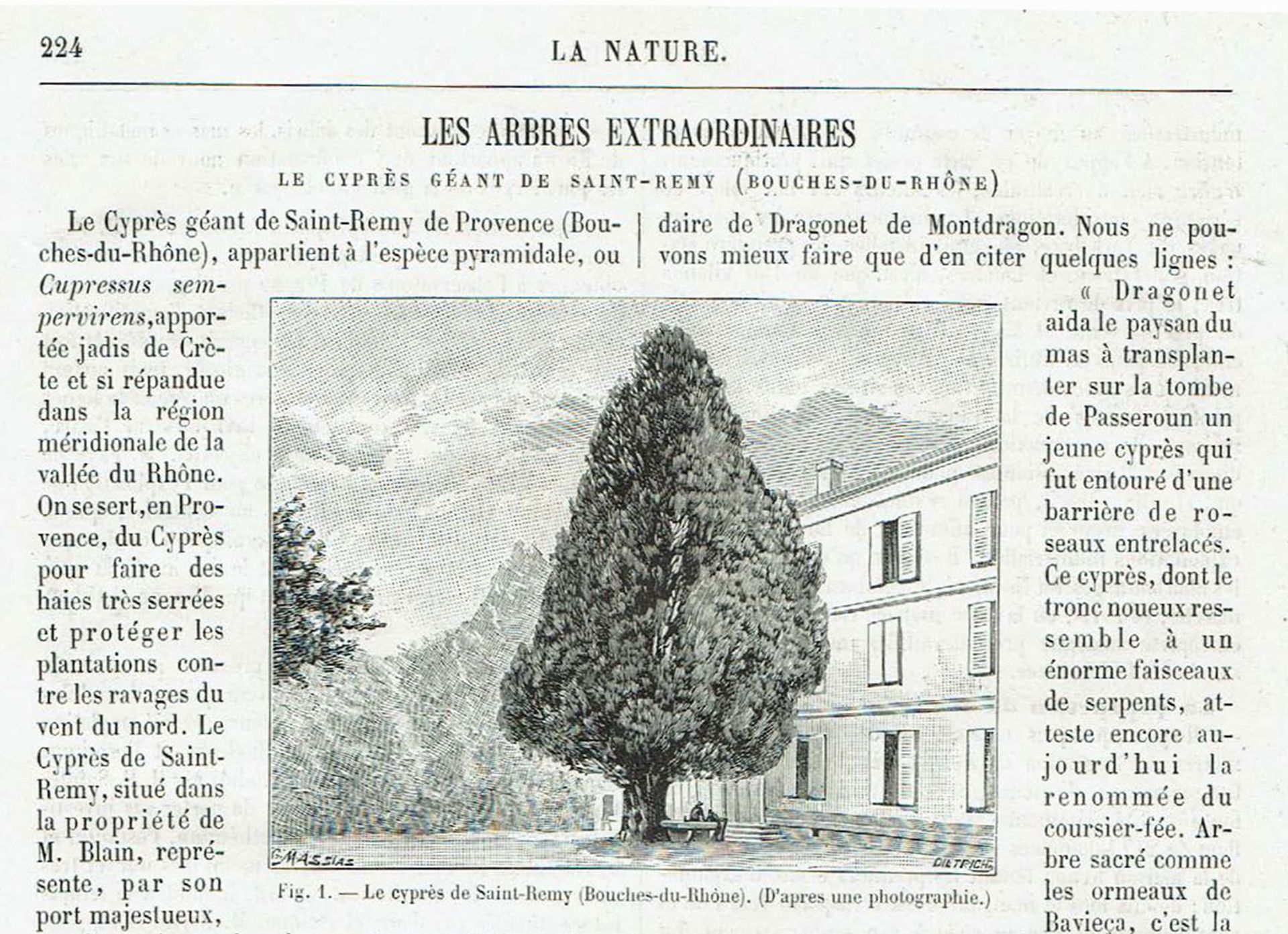
“The Giant Cypress of Saint-Rémy” (at the Gaillard farm, two kilometres from the asylum), published in La Nature, 4 March 1893
A Wheat Field, with Cypresses is among Van Gogh’s finest Saint-Rémy landscapes. He made three versions, two of which will be in the Met show: the first (June 1889), painted outdoors, in the museum’s own collection, and an even more powerful work done a few months later in his studio (September 1889), coming on loan from London’s National Gallery. This will be the first time that these two pictures have been exhibited together since 1901.
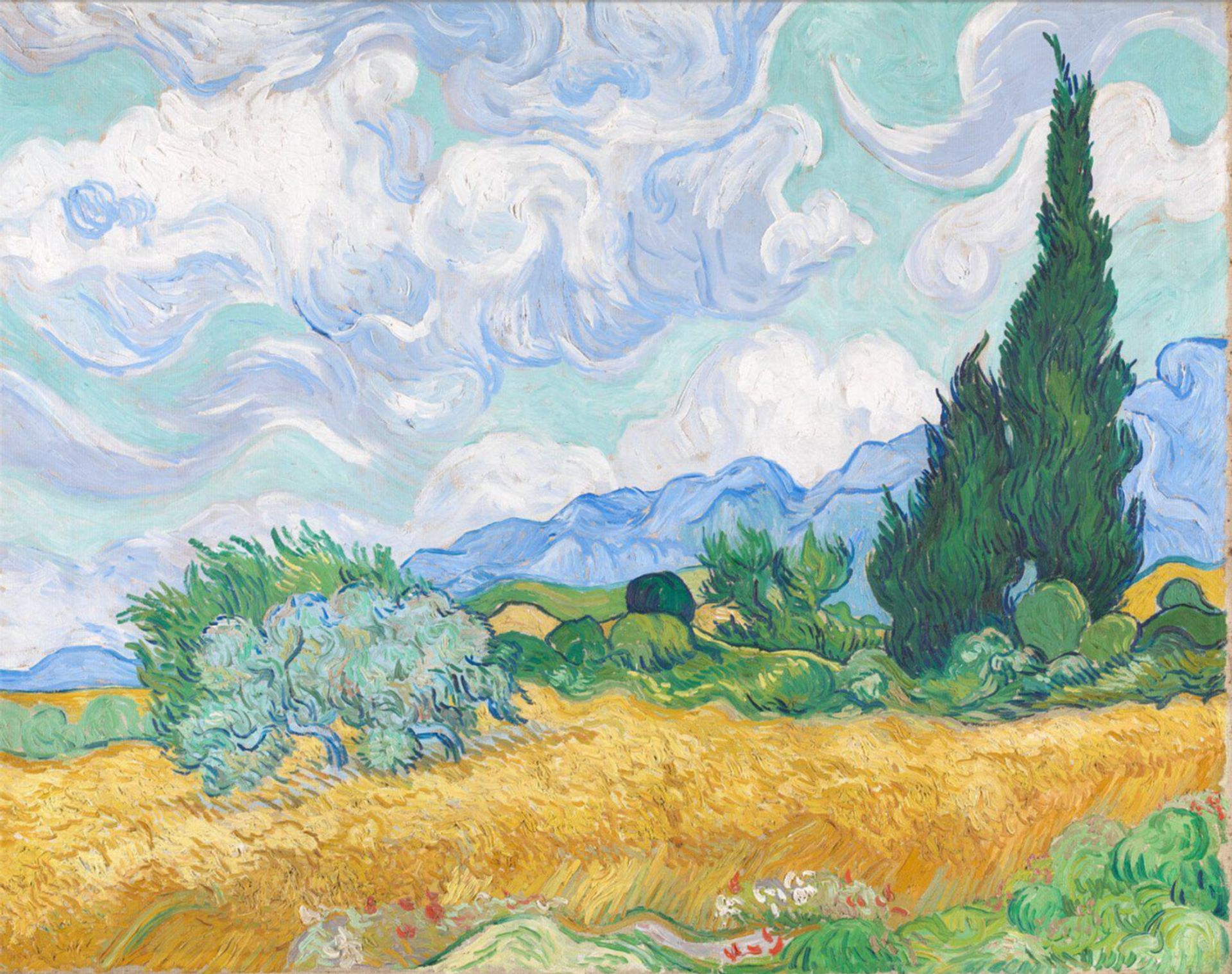
Van Gogh’s A Wheat Field, with Cypresses (September 1889) National Gallery, London
In both versions a golden band of ripened wheat ripples across the foreground, enlivened by a scattering of scarlet poppies. Several olive trees lie marooned in the sea of wheat and slightly further away stands a clump of dark cypresses, close together. The tallest one almost reaches the top of the canvas, silhouetted against the swirling clouds.
Starry Night (June 1889), painted in the same month as the original A Wheat Field, with Cypresses, is very different, as a nocturnal scene. Van Gogh captured the dynamism of the twisted forms of the trees, creating a powerful visual link between the earth and the heavens. Now very rarely lent, Starry Night will travel up Fifth Avenue to the Met exhibition.
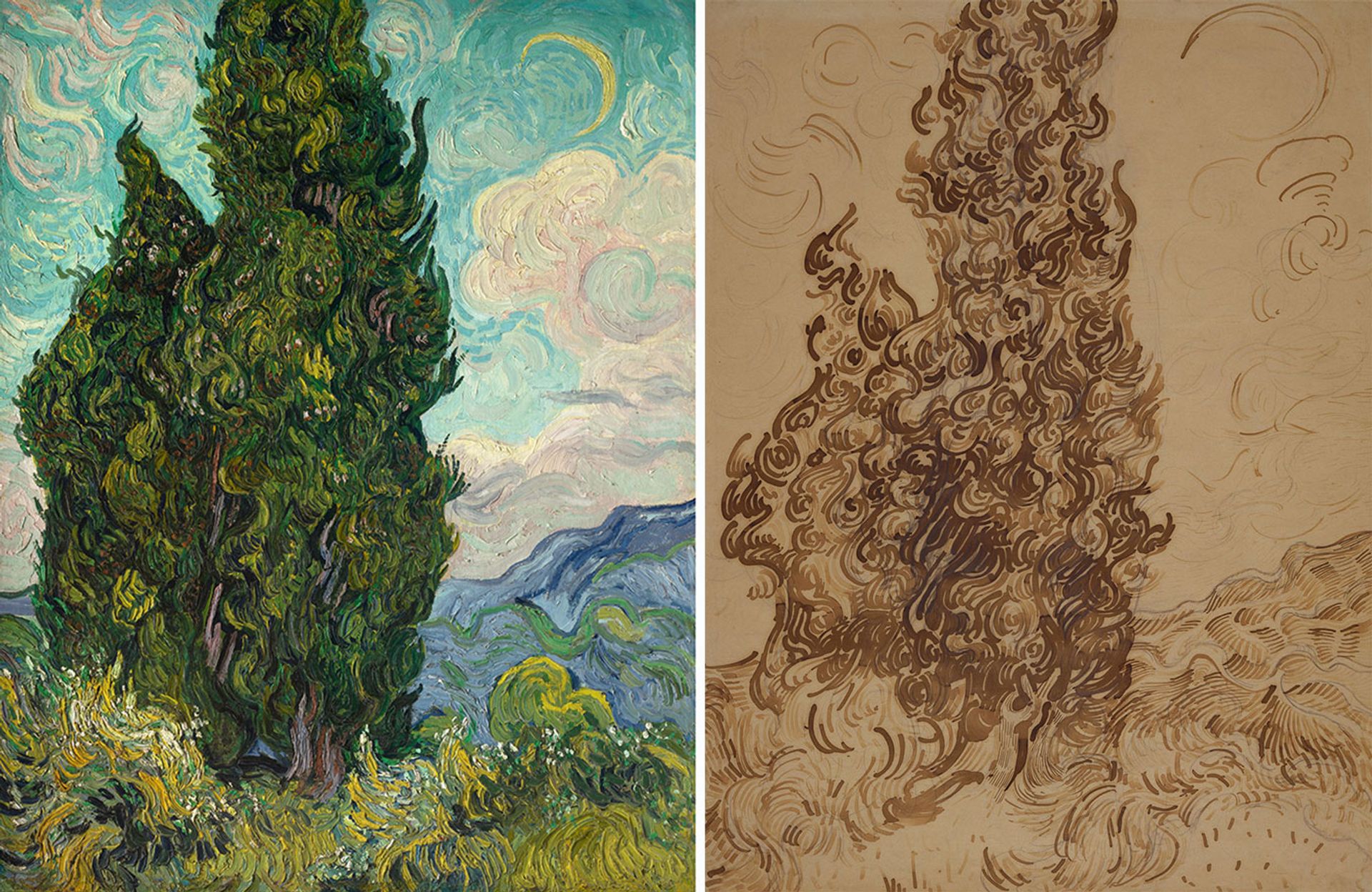
Van Gogh’s Cypresses (June 1889) and the drawing Cypresses (June 1889) Metropolitan Museum of Art, New York (Rogers Fund, 1949, 49.30) and Brooklyn Museum (Frank L. Babbott Fund and A. Augustus Healy Fund, 38.123)
In some other Saint-Rémy landscapes, the trees dominate the compositions, as in the Met’s own Cypresses (June 1889). Vincent also drew a copy of this painting, to send to Theo in Paris and show what he was working on. Fortuitously, this drawing eventually ended up only a few miles away from the Met at the Brooklyn Museum, and it too will be coming to the show.
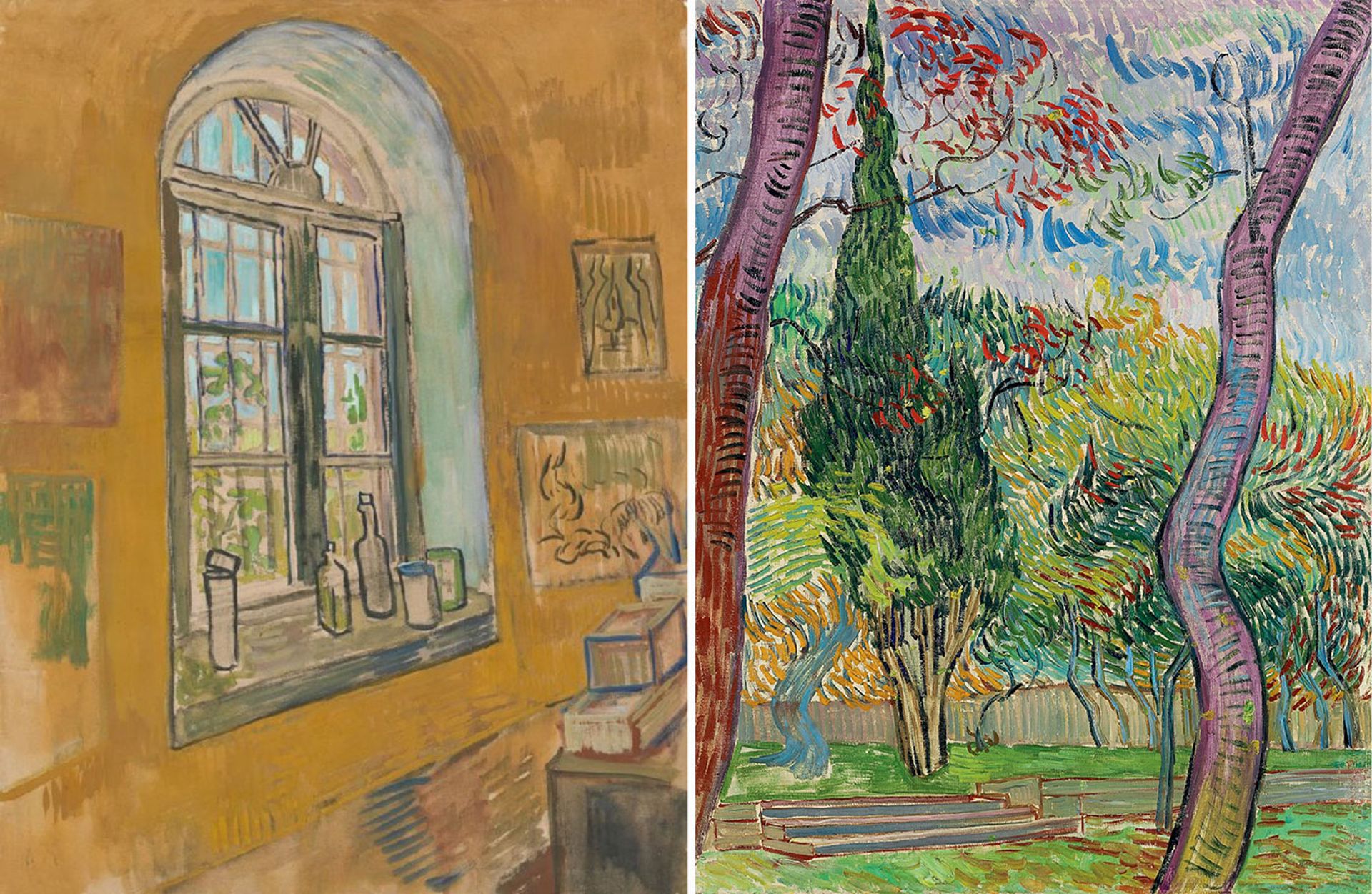
Van Gogh’s Window in the Studio (September-October 1889) and Trees in the Garden of the Asylum (September-October 1889) Van Gogh Museum, Amsterdam (Vincent van Gogh Foundation) and private collection
In Window in the Studio (September-October 1889), an intimate depiction of Van Gogh’s workroom, the importance of the cypresses could hardly be more evident. As I point out in my book Starry Night: Van Gogh at the Asylum, two very sketchily depicted paintings hang on the right side of the studio wall: the lower one is probably Starry Night and the upper one is Trees in the Garden of the Asylum (September-October 1889), which is now in a private collection—it was auctioned by Christie’s in 2010 for £9m.
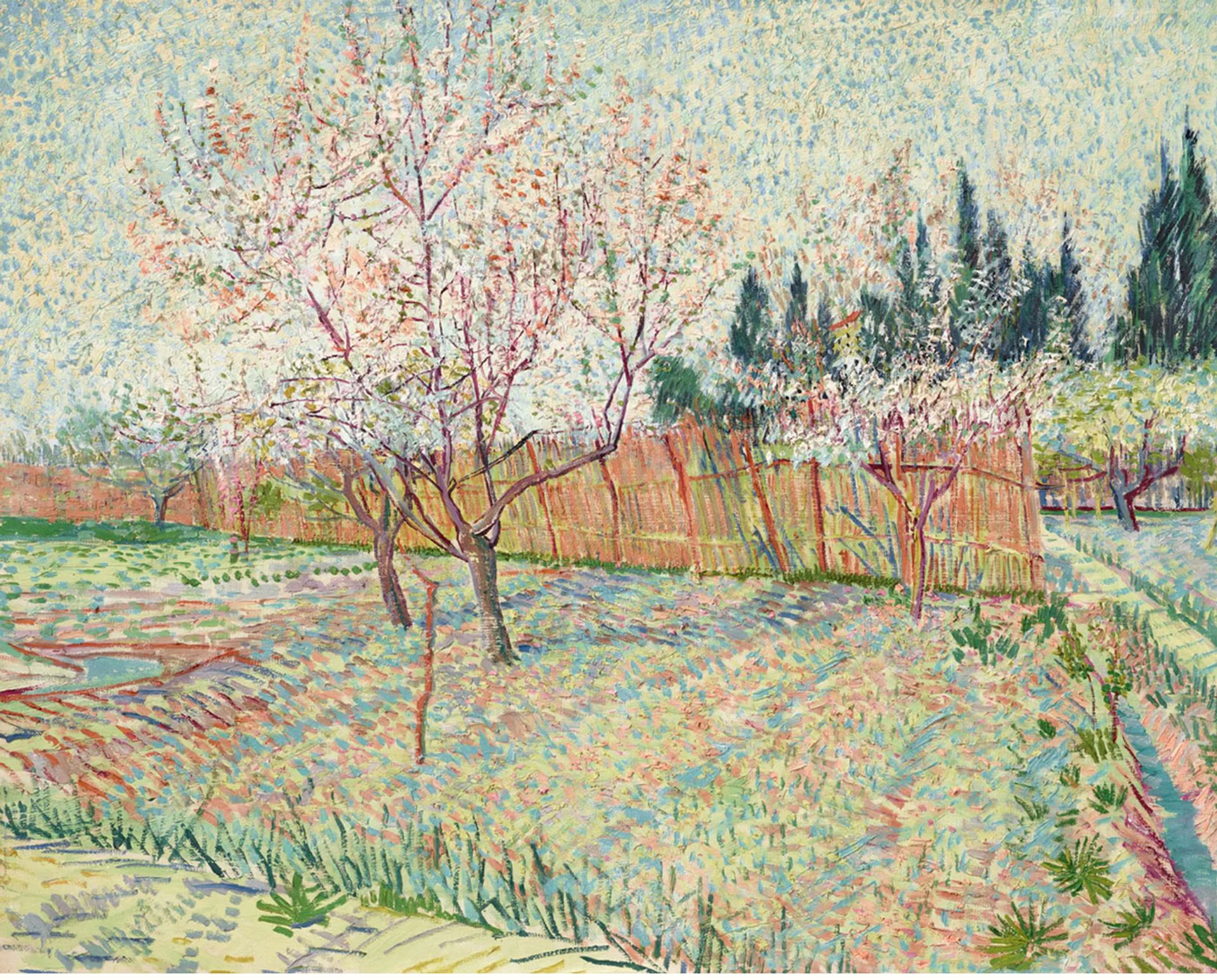
Van Gogh’s Orchard with Cypresses (April 1888), sold at Christie’s, New York, 9 November Christie’s
Although virtually all the Met’s loans have now been finalised, one work remains uncertain: Orchard with Cypresses (April 1888). This sold on 9 November at Christie’s, New York for $117m, a record price for a Van Gogh. At the end of the catalogue entry, Christie’s recorded that it had been requested for the Met exhibition as “one of the centerpiece works”. Assuming the anonymous new owner is willing to agree to a loan, it would hang among the very best company in Van Gogh’s Cypresses.


